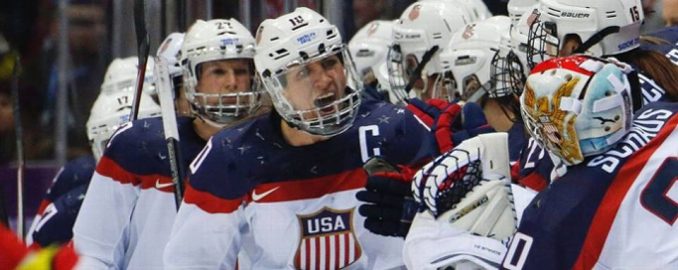Women’s hockey team threatens boycott over unequal pay
 March 20 — As everyone knows, the former San Francisco 49ers quarterback, Colin Kaepernick, both sat and kneeled in protest during the playing of the national anthem during the 2016 National Football League season to bring attention to racist oppression, especially police brutality.
March 20 — As everyone knows, the former San Francisco 49ers quarterback, Colin Kaepernick, both sat and kneeled in protest during the playing of the national anthem during the 2016 National Football League season to bring attention to racist oppression, especially police brutality.
This individual act of heroism helped to elevate the Black Lives Matter movement to an unprecedented level of visibility and solidarity among broader sectors of the U.S. population, reminiscent of the late, great Muhammad Ali, who took a stand against the Vietnam war 50 years ago.
To this day, Kaepernick’s protest continues to have a social impact on other important issues exposing inequality in the U.S. This includes the ongoing struggle against pay inequity when it comes to female and male athletes.
In a major development, members of the U.S. women’s hockey team announced on March 15 that they will be boycotting the upcoming world championship games scheduled March 31 through April 7 in Plymouth, Mich.
This women’s team is currently ranked number one in the world. Since women’s hockey came on the world scene in 1998, the U.S. team has won seven gold medals, along with diverse medals in every Olympic game. According to ESPN.com, USA Hockey, sponsor of the women’s and men’s teams, reported a gross revenue of $42 million in 2014-15, and paid its executive staff compensation ranging from $440,209 in salary and bonuses for director Dave Ogrean to $250,000 to $300,000 for other senior officials. (March 16)
How do these exorbitant salaries and bonuses compare to those of women players, whom fans turn out to see excel?
“Out of a four-year cycle, USA Hockey pays for only six months out of an entire four years. They pay us $1,000 per month in those six months. So, for the other 42 months we don’t get paid at all by USA Hockey,” Jocelyne Lamoureux-Davidson, a two-time Olympic silver medalist, told ESPN. “It is a full-time job, and to not get paid is a financial burden and stress on the players, obviously.”
This amounts to a measly $6,000 per six months whenever the team trains in preparation for the Olympic games. During the rest of the three-and-a-half years of training, the United States Olympic Committee can supplement their salaries. But that is capped at $24,000 depending on the degree of “accomplishment” of certain players. In other words, the USOC has various tiers of wages, like many other corporations. Those players viewed as average or below average receive no more than $700 a month from the USOC.
It should be noted that many USA Hockey male players are also members of professional hockey teams, making at least six-figure salaries, if not more.
Besides the terrible pay, women players have complained to USA Hockey officials about goalies having to use their own antiquated college equipment; horrible, cramped, unsanitary living quarters resulting in spider bites; and strenuous travel that none of their male counterparts are asked to endure to get to competitions.
Instead of coming to terms with the women’s demands, USA Hockey officials are threatening to replace the women’s team. This amounts to management saying it will call in scab labor.
The women hockey players have also complained that, while more than $3.5 million per year has been publicly earmarked to support boys participating in the national hockey team development program, there is no equivalent program for girls.
Is this just another example exposing that any amount of patriotism exhibited by U.S. athletes cannot make them immune to all the levels of institutionalized inequality, be that racism, sexism, homophobia or discrimination against those with disabilities?

